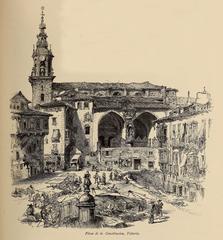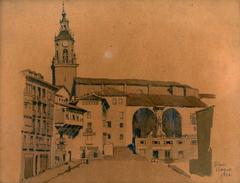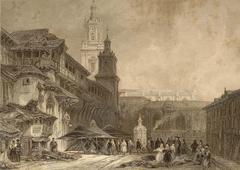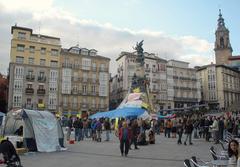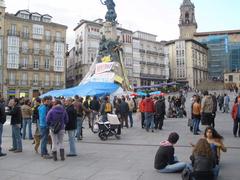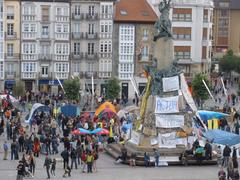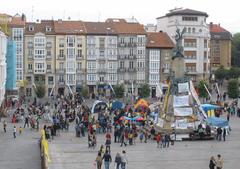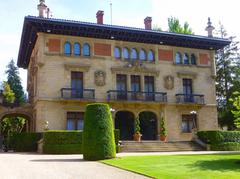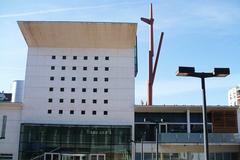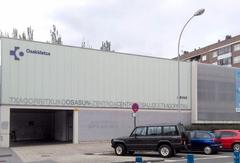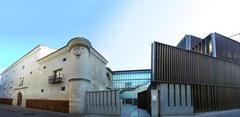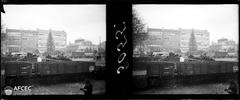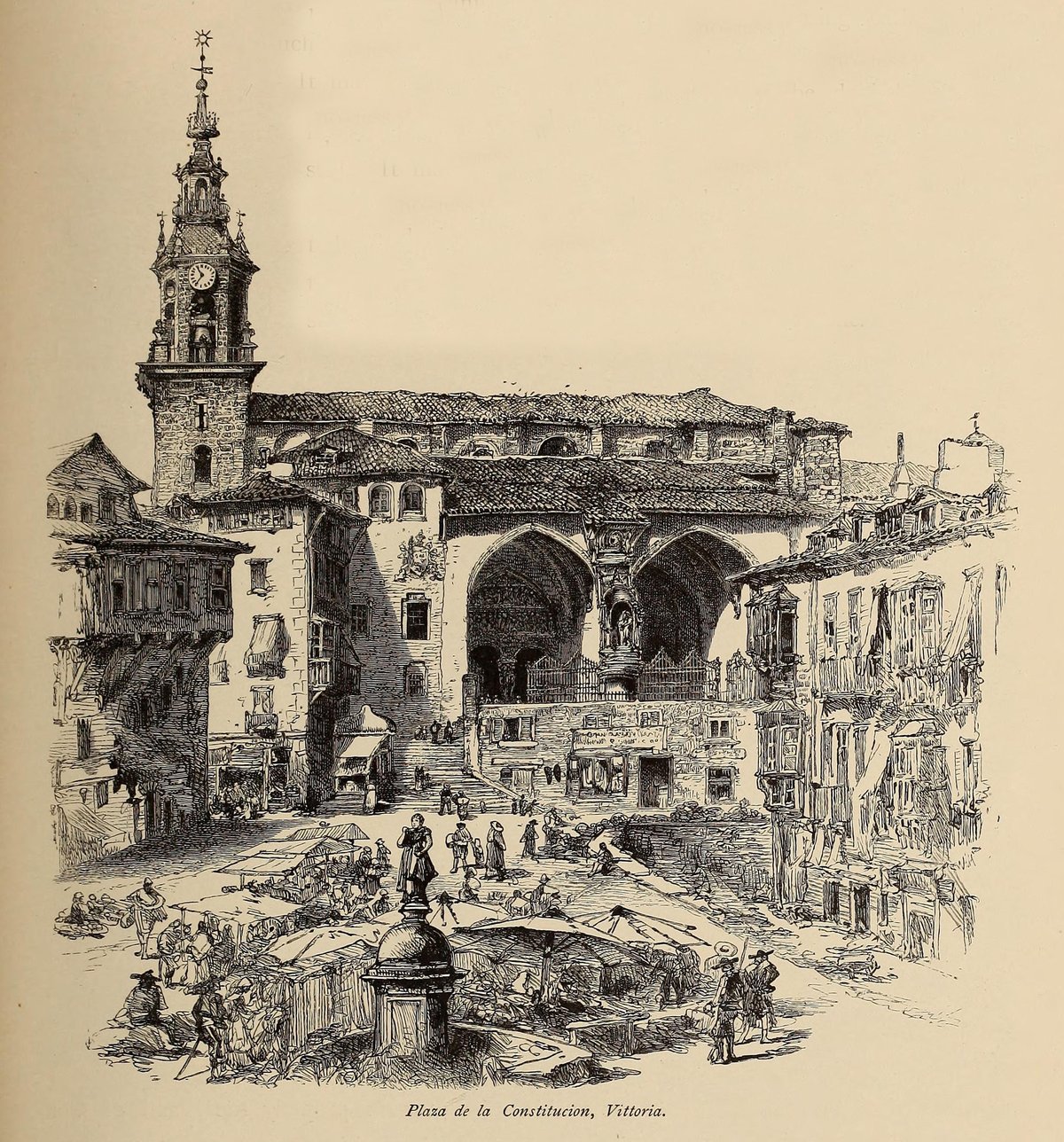
Visiting Monumento a la Batalla de Vitoria: Hours, Tickets, and Tips
Date: 17/07/2024
Introduction
The Monumento a la Batalla de Vitoria, located in the heart of Vitoria-Gasteiz, Spain, commemorates the pivotal Battle of Vitoria, which took place on June 21, 1813. This battle marked a turning point in the Peninsular War, leading to the eventual downfall of Napoleon’s French Empire (History Today). For visitors, the monument offers an immersive historical and cultural experience. This guide provides essential information for planning your visit, including the monument’s history, visiting hours, ticket prices, accessibility, travel tips, and nearby attractions.
Table of Contents
- Introduction
- History of the Monument
- Visitor Information
- Travel Tips
- Special Events and Guided Tours
- FAQs
- Conclusion
- References
History of the Monument
The Battle of Vitoria
The Battle of Vitoria, fought on June 21, 1813, was a decisive victory for the allied forces of Britain, Portugal, and Spain, led by the Duke of Wellington, against the French army commanded by King Joseph Bonaparte. This victory marked the beginning of the end of French domination in Spain and significantly contributed to the downfall of Napoleon’s empire (History Today).
Commissioning and Design
Commissioned in 1917 and designed by the renowned Spanish sculptor Gabriel Borrás Abella, the monument was officially inaugurated on June 21, 1918, exactly 105 years after the battle. It is situated in the Plaza de la Virgen Blanca, a central and historically significant location in Vitoria-Gasteiz (Vitoria-Gasteiz Tourism).
Architectural and Artistic Features
The Monumento a la Batalla de Vitoria stands at 25 meters tall and is made primarily of bronze and stone. It is divided into several distinct sections:
The Base
The base features a series of bas-reliefs that illustrate key moments from the Battle of Vitoria, including scenes of the allied forces advancing, the French army in retreat, and the local population celebrating the victory.
The Central Column
A tall, cylindrical column rises from the base, adorned with additional sculptural elements. Midway up the column, there are four allegorical figures representing the allied nations—Britain, Portugal, Spain, and the Kingdom of Sardinia.
The Statue of Victory
At the top of the column stands a statue of Victory, holding a laurel wreath in one hand and a sword in the other. This statue symbolizes the triumph of the allied forces and the liberation of Spain from French rule.
Historical Significance
The Monumento a la Batalla de Vitoria is not only a tribute to a pivotal military victory but also a symbol of national pride and resilience. The battle led to the eventual withdrawal of French troops from Spain and the restoration of the Spanish monarchy.
Restoration and Preservation
Over the years, the monument has undergone several restoration efforts to preserve its structural integrity and artistic details. The most recent restoration took place in 2013, coinciding with the bicentenary of the battle.
Visitor Information
Visiting Hours
The Monumento a la Batalla de Vitoria is accessible to the public 24 hours a day. However, guided tours and certain facilities may have specific visiting hours, typically from 10:00 AM to 6:00 PM.
Ticket Prices
Visiting the monument itself is free of charge. Guided tours may have a fee, often ranging from €5 to €10 per person. It is advisable to check the official website for the most current information on ticket prices and availability.
Accessibility
The monument is located in the Plaza de la Virgen Blanca, which is fully accessible for visitors with mobility issues. Ramps and pathways are available to ensure everyone can enjoy the site.
Travel Tips
Best Times to Visit
Visiting during weekdays or early mornings can help avoid large crowds. The annual ceremonies on June 21 are particularly special but can be very crowded.
Nearby Attractions
While in Vitoria-Gasteiz, consider visiting other historical sites like the Cathedral of Santa María and the Museo de Bellas Artes. The Plaza de la Virgen Blanca itself is surrounded by cafes and shops, perfect for a leisurely day out.
Special Events and Guided Tours
Regular Events
Annual commemorative ceremonies are held on June 21 to honor the memory of those who fought in the battle. These events often include reenactments, speeches, and musical performances.
Guided Tours
Guided tours are available and highly recommended for those interested in a deeper understanding of the monument’s history and artistic features. Tours can be booked in advance through the official website or local tour operators.
FAQs
How do I get to the Monumento a la Batalla de Vitoria?
The monument is centrally located in Vitoria-Gasteiz and can be easily reached by public transport, including buses and trams.
Are there any restrictions on photography?
Photography is allowed, but the use of drones or professional equipment may require special permission.
Can I bring pets to the monument?
Pets are generally allowed in the surrounding plaza but should be kept on a leash and under control at all times.
Conclusion
The Monumento a la Batalla de Vitoria stands as a testament to a crucial moment in Spanish history. Its artistic and architectural grandeur, combined with its historical significance, make it a landmark of national importance. For those interested in the Peninsular War, Spanish history, or monumental art, a visit to this monument offers a profound and enriching experience.
Ongoing preservation efforts ensure that the monument remains in excellent condition for future generations to appreciate. Special events, such as the annual reenactment of the Battle of Vitoria, offer unique opportunities to experience the local history and culture in a festive atmosphere. By following the travel tips and guidelines provided in this guide, you can make the most of your visit to the Monumento a la Batalla de Vitoria and enjoy a truly enriching experience (Spain.info).
For more travel tips and updates, follow us on social media or download our mobile app Audiala.
